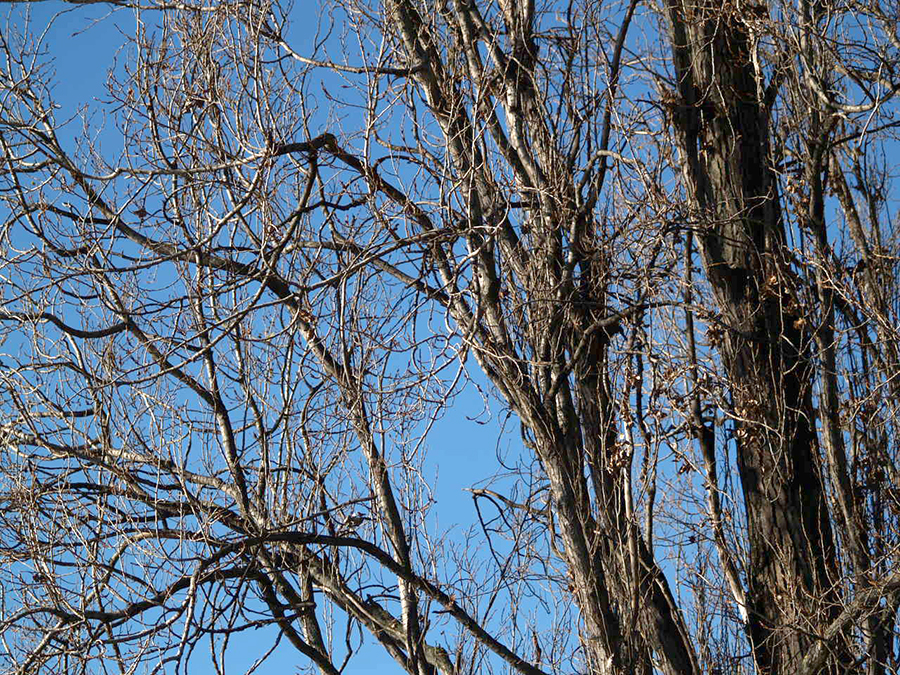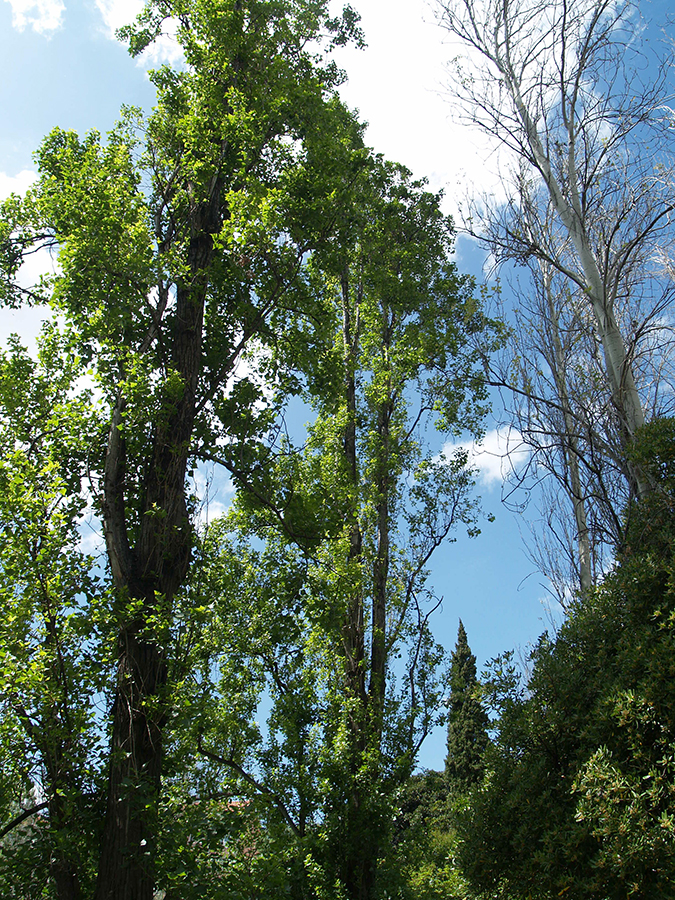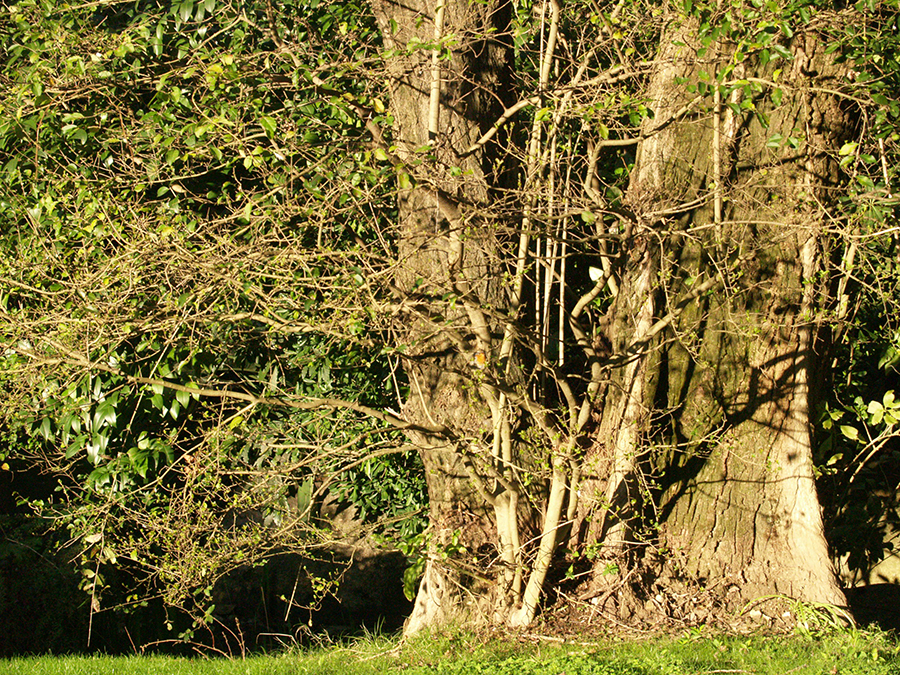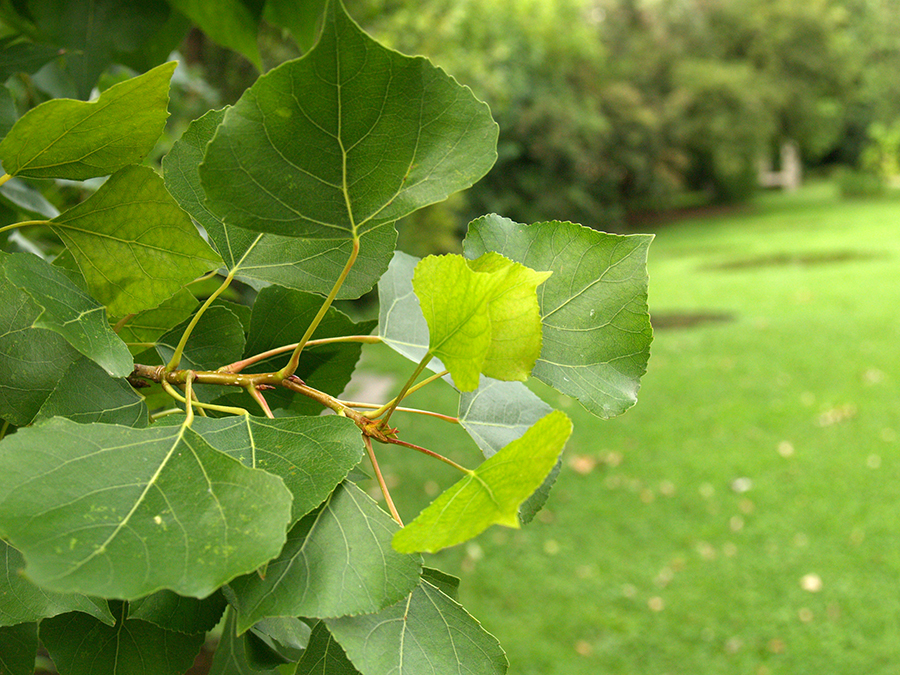
Black Poplar
Populus nigra
Family and description
From the Salicaceae family, the black poplar is a deciduous tree that can reach a height of 30 m.
Its canopy can be either pyramidal, oval or columnar, with a diameter of 8 to 15 m and abundant branching. The bark is gray and smooth in young specimens, fissured longitudinally and brownish in adult specimens.
The leaves are diamond-shaped to triangular, 5–8 cm long and 6–8 cm broad, bright green on both surfaces, turning yellow in autumn. It’s a dioecious species – male and female flowers grow on different plants.
Flowering takes place before the formation of leaves, between February and April. The flowers are small, grouped in pendent unisex loops. The masculine tops are gray, of which the stamens of reddish colour stand out; the females are greenish-yellow.
The fruit is a 7-9 mm ellipsoid capsule with seeds that have white tufts, known as cottonwood.
Its origin is not consensual, with eastern and western Asia being considered as the more likely areas of origin, becoming wild in most of Europe and North Africa. There are records of its cultivation since antiquity.
Origin and habitat
Poplars are riparian trees, and may occur spontaneously in well-lit places with deep, moist and fresh soils.
Uses and curiosities
It is used as an ornamental tree and for the protection of valleys’ soil. It is a fast growing tree of short life cycle. It can be propagated by cuttings as well as being born from roots.
Its bright light wood is used for the manufacture of toothpicks, matches, toys and other objects of light carpentry; also in paper production and it was used in the past to build rail cars.
The bark of the branches has medicinal properties and is used in infusions to treat fever, rheumatism and bronchitis.


